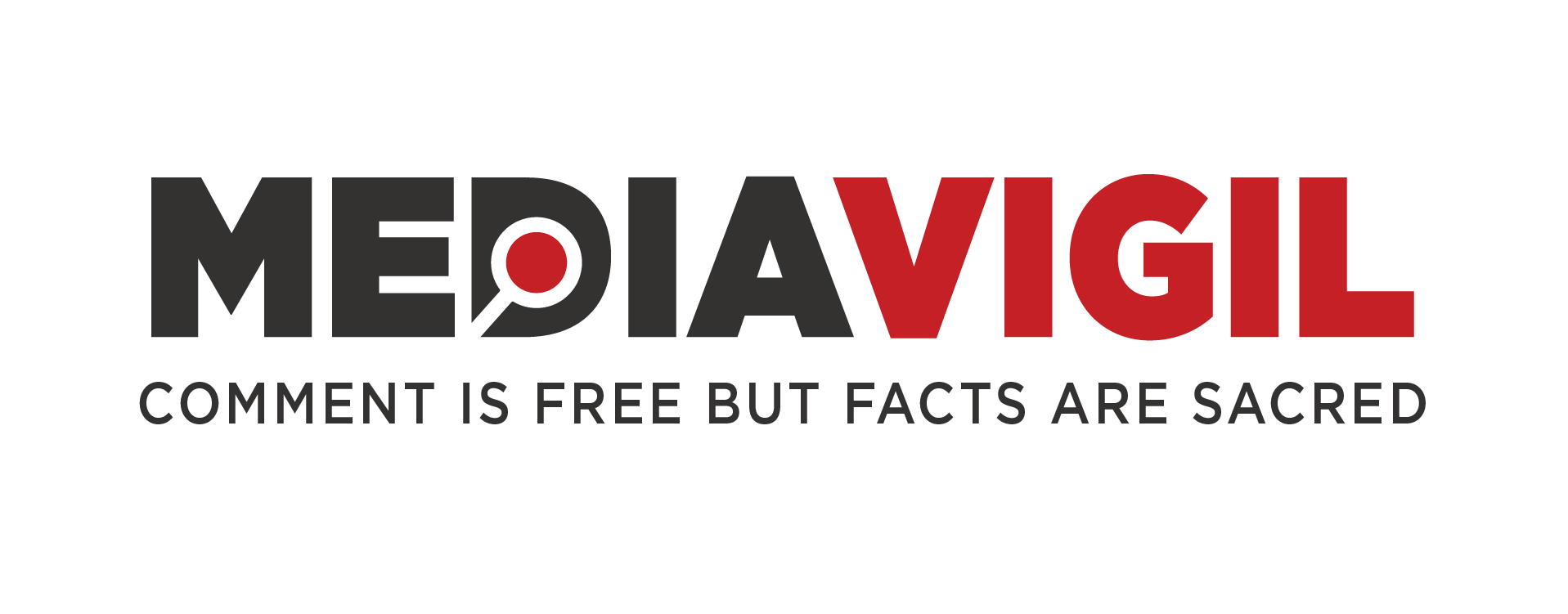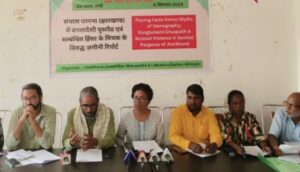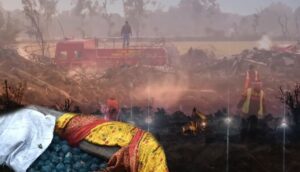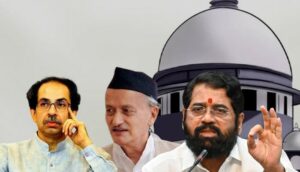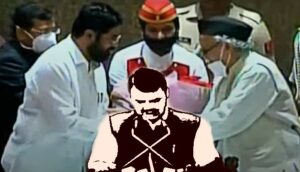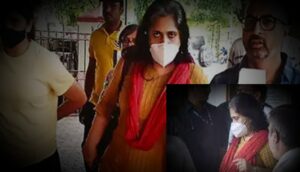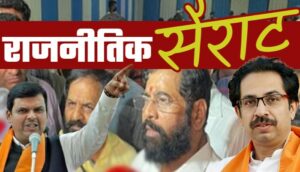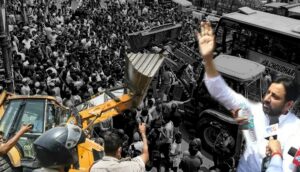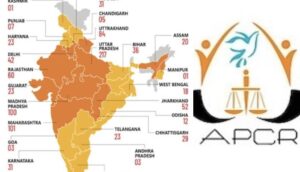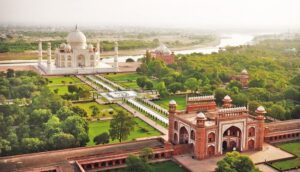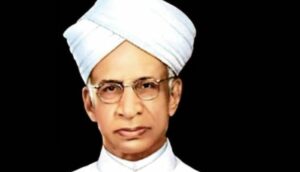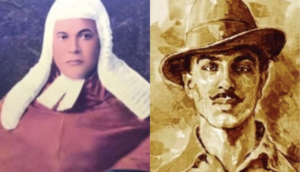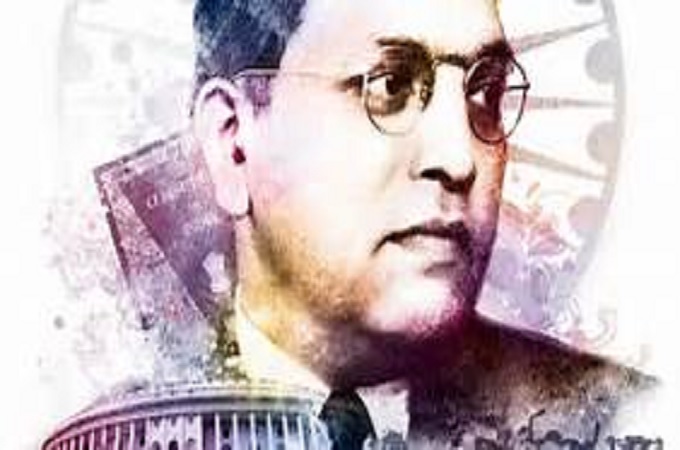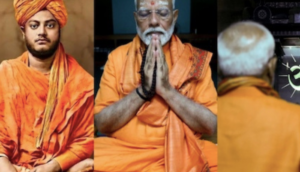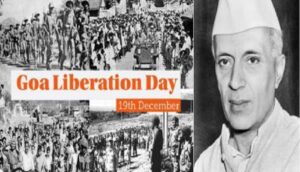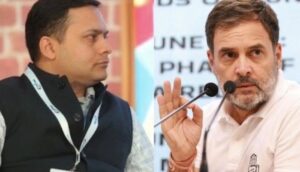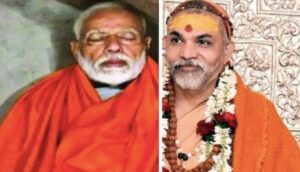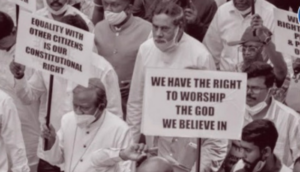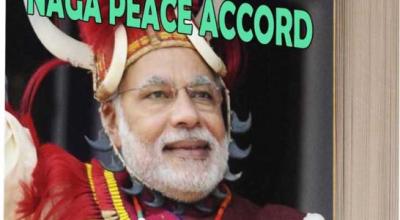
‘नगालैंड का अलग झंडा और पासपोर्ट होगा…. !’…..तमाम अन्य चौंकाने वाली बातों के साथ यह भी उस शांति समझौते का हिस्सा है जो अगस्त 2015 की शुरुआत में केंद्र और नेशनल सोशलिस्ट काउंसिल ऑफ नगालैंड (इज़ाक मुइवा) के बीच हुआ था। पिछले कुछ दिनों से उत्तर पूर्व के अखबारों में इस बात को लेकर काफ़ी चर्चा है, लेकिन मुख्यधारा का मीडिया में इसका रत्ती भर भी ज़िक्र नहीं है। योग-तमाशे की चकमक छवियाँ गढ़ने और प्रसारित करने में जुटा मीडिया दरअसल, तमाम ज़रूरी चीज़े छिपाने का उपकरण बन गया है। न सबसे तेज़ आज तक, न आपको आगे रखने वाला एबीपी न्यूज़ और न ही राष्ट्रवाद के नाम पर नफ़रत और युद्धोन्माद फैलाने वाला टाइम्स नाऊ और उसके तमाम क्लोन, किसी भी चैनल में इसकी चर्चा नहीं है। हिंदी के अख़बारों की तो बात ही जाने दीजिए, टाइम्स ऑफ इंडिया और इंडियन एक्सप्रेस तक इस मुद्दे पर ख़ामोश हैं जबकि पिछले हफ़्ते भर से यह मुद्दा सोशल मीडिया में छाया हुआ है। केंद्र सरकार भी सन्नाटा खींचे हुए थी। आज शाम को कुछ सकुचाते हुए गृहराज्यमंत्री किरन रिजीजू ने कहा है कि अलग झंडे और पासपोर्ट की मांग अभी मानी नहीं गई है, लेकिन समझौते के जानकार इस पर सरकार की सहमति बताने पर अड़े हैं। बहरहाल, असल मुद्दा है कि मीडिया चुप क्यों है ? वह सच्चाई बताने से परहेज़ क्यों कर रहा है ? वरिष्ठ पत्रकार पंकज चतुर्वेदी ने इसे शर्मनाक बताते हुए पूछा है कि क्या ऐसे मीडिया के बहिष्कार का वक़्त आ गया है ? पढ़िये–
”आज जिन दो खबरों को मैं अखबारों में तलाश रहा था, हिंदी के किसी भी अखबार में नहीं मिली, एक है नागालैंड में आतंकवादियों के साथ समझौता कर देश में नई रीत लागू करने की और दूसरी हरियाणा में भारत के लोकतांति्रक इतिहास के सबसे बडे घोटाले की जांच की. किसी भी अखबार ने इसे स्थान नहीं दिया. मीडिया के यह हालात चिंता का सबब हैं, यह तो आपातकाल से भी बदतर हालात हैं कि योग पर चार चार पेज रंगने वाले देश व समाज के सरोकार की खबरों को पाठकों से ना केवल छुपा कर बेईमानी कर रहे हैं, बल्कि अपनी विश्वसनीयता और स्वत़त्रता को गिरवी रख रहे हैं . ये खबरे हैं–
1. साल 2015 में जिस नगा समझौते को मोदी सरकार ने देख के लिए खुशखबरी बताया था , अब कुछ समाचारों ने उसके प्रावधानों पर सवाल खड़े कर दिए हैं. समाचारों के अनुसार नागालैंड में शांति समझौते के लिए भारत सरकार और विद्रोही ग्रुप NSCN-IM के बीच समझौते के अनुसार नागालैंड के लोग अपना अलग झंडा और पासपोर्ट रख सकेंगे.
आश्चर्यजनक रूप से इस बात का खुलासा समझौता होने के लगभग 1 साल बाद हुआ है और भारत सरकार ने भी इस पर चुप्पी साधी है . भारत की मुख्यधारा की मीडिया ने भी इस पर कोई समाचार नहीं प्रकाशित किया है जबकि उत्तर पूर्व के स्थानीय समाचार पत्रों ने इसे प्रमुखता से प्रकाशित किया है .
NSCN-IM के स्वघोषित गृह मंत्री किलो किनोंसेर के अनुसार भारत सरकार ने उनकी अलग झंड और पासपोर्ट की मांग मान ली है और यह 2015 के समझौते का हिस्सा है.
पूर्व विद्रोही समूह के अनुसार NSCN-IM और भारत सरकार के बीच का यह समझौता नागाओं के अलग राजनितिक विचारधारा की जीत है.
नरेन्द्र मोदी की केंद्र सरकार द्वारा इस समझौते को ऐतिहासिक बताया गया था और स्वयं प्रधानमंत्री मोदी ने ट्वीट कर कहा था कि देश को खुशखबरी मिलने वाली है.
2. राज्यसभा चुनाव में गलत स्याही के कारण रद्द हुए 13 वोट का मामला थमने का नाम नहीं ले रहा है। इसी मामले को लेकर हरियाणा कांग्रेस के प्रदेशाध्यक्ष अशोक तंवर, कांग्रेस विधायक किरण चौधरी और कांग्रेस, इनेलो समर्थित उम्मीदवार आरके आनंद चंडीगढ़ के सेक्टर-3 थाने में एफआईआर दर्ज करवाने पहुंचे।
मामले पर एफआईआर दर्ज न होने को लेकर तीनों नेताओं व कांग्रेसियों ने थाने में प्रदर्शन किया। हालांकि इस मामले में पहले ऑनलाइन शिकायत दी जा चुकी है। किरण चौधरी ने आरोप लगया कि पुलिस दबाव में है, इसलिए उनकी शिकायत दर्ज नहीं की जा रही।
गौरतलब है कि आरके आनंद इससे पहले भी चंडीगढ़ आईजी को शिकायत दे चुके हैं। इस बार तीनों ने अंबाला के बीजेपी विधायक असीम गोयल, निर्दलीय विधायक जयप्रकाश, विजयी राज्यसभा उम्मीदवार सुभाष चंद्रा और रिटर्निंग ऑफिसर आरके नांदल के नाम शिकायत दी है।
उल्लेखनीय 11 जून को राज्यसभा के लिए हुए चुनाव में गलत पेन से वोट डालने के कारण 13 वोट रद्द हो गए थे। इनेलो कांग्रेस के कुल 37 वोटों का समर्थन होने पर भी एडवोकेट आरके आनंद हार गए थे। आनंद को कुल 21 वैलिड वोट मिले थे। जबकि भाजपा समर्थित सुभाष चंद्रा को 15 वोट ही मिले थे, लेकिन वह दूसरी वरीयता के वोटों की कारण चुनाव जीत गए थे। इस मामले में कांग्रेस और इनेलो ने आरोप लगाया कि सत्तापक्ष और अधिकारियों की मिलीभगत स्याही का खेल रचा गया था। जिस की बाद मे 13 जून को आरके आनंद, अशोक तंवर और कांग्रेस नेता बीके हरिप्रसाद ने चुनाव आयोग को दिल्ली में इसकी शिकायत दी। इस के बाद चुनाव आयोग की एक टीम दिल्ली से चंडीगढ़ विधानसभा जांच के लिए पहुंची। इस पूरे घटनाक्रम के बाद 16 जून को चुनाव आयोग ने तीनों प्रत्याशियों को चुनाव की पूरी वीडियो दिखाने का फैसला कर इन्हें वीडियो दिखाई लेकिन जिस के बाद इंक कंट्रोवर्सी ने ओर तुल पकड़ लिया। इसकी जांच में सामने आ गया है कि कतिपय लेागों ने पेन बदला व एक निर्दलीय वधिायक ने आनंद समर्थक वोट गिरने के बाद फिर से असली पेन रख दिया.
लगता है कि अब पाठकों को एक दिन मीडिया का बहिष्कार करना होगा, इस बेईमानी के विरोध में
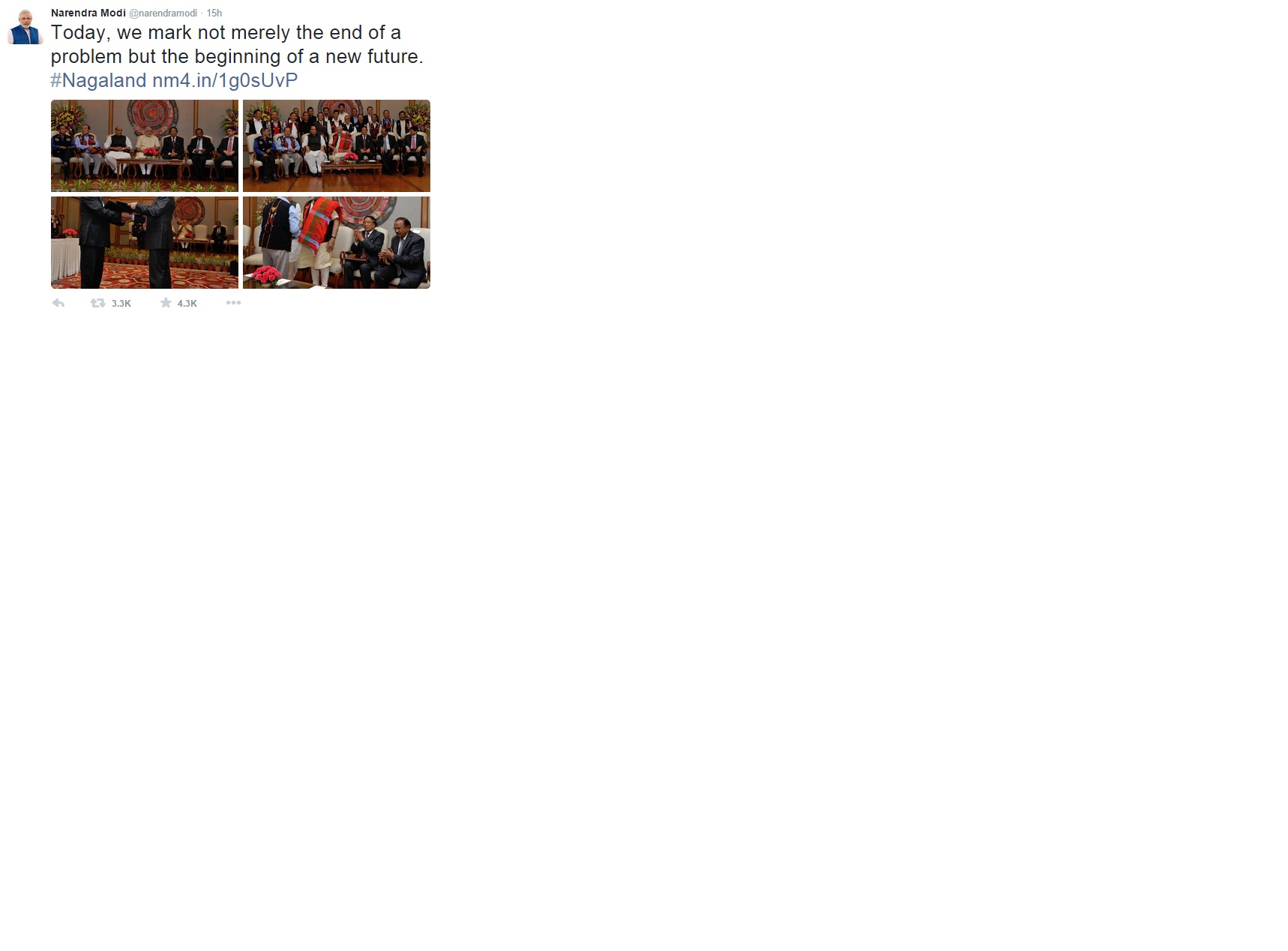
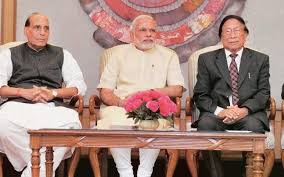
अगर नगा समझौते के बारे में कुछ विस्तार से जानना चाहते हैं तो नीचे पढ़ें, झंडा ही नहीं, अलग मुद्रा तक की बात है–
While Mr. RN Ravi, India’s Interlocutor to Indo-Naga political dialogue was meeting with the different Naga CSOs in Nagaland for the political solution based on Framework Agreement signed on August 3rd, 2015, he mentioned two interesting points:
1. Indians and Nagas will live through sharing of sovereign power (shared sovereignty between Indians and Nagas) and
2. The two entities (India and Nagaland/-lim) will have peaceful co-existence in the spirit of equality and respect for each other based on Uniqueness of Naga History and Situation.
Among all the points he made, undoubtedly these two lines stand tall and yet sometimes seemingly misleading to the people as the mainland media house is spreading its own version of interpretation like a wildfire. So it is necessary on the part of Nagas to stress on the agreement, the way how it is understood by the Nagas in general.
First: What is sharing of sovereign power? That would be the question I’d like to ask Mr. Ravi because it could mean Nagas sharing the sovereign power with India and therefore the Indian Constitution is applicable or did Mr. Ravi mean that India desires to share Naga sovereignty. Could it mean for Mr. Ravi that India and Nagaland (lim) in a federation of nations share power but still are sovereign nations and share several articles of their constitutions?
Then: based on his succint highlight I would like to throw light on how Nagas understand “Shared Sovereignty”, a much speculated term now among Nagas and Indians alike. In Naga understanding shared sovereignty simply means an international political status lower than their century old and traditional status – complete sovereignty. This guarantees Nagas they can maintain their unique identity and exercise their political right. If India is genuinely committed to solve the Indo-Naga political conflict, one of the longest running conflicts in the world and create a peaceful environment in the region, then it should acknowledge the rights of the Nagas and thus want and live up to their level of expectations. Following are the fundamental components of shared sovereignty Nagas have in mind.
Shared Sovereignty in the eyes of Nagas:
a) Naga Constitution
Before we jump into the topic of talking about a Naga constitution, in retrospect we should briefly glance at history. It was in 1929 the Naga Club submitted a Naga memorandum to John Simon of Great Britain, stating that Nagas wanted to be left alone like they were before the British partly colonized them. It means that Nagas were independent and wanted to be left independent when the British colonial government would leave the Naga homeland. Based on this memorandum Nagas declared independence on August 14th, 1947 but had to continue their struggle because Jawaharlal Nehru, the first Prime Minister of India and the United Nations did not acknowledge it.
Nagas were never been in favor of being within the constitution of India. The bloody aftermath of the infamous Shillong Accord 1975 is a clear proof of that. Until date Nagas were not ready to bow down before India anyway. Though NNC treated SA-1975 as invalid it caused bloodshed and resulted in a horrible split. The formation of NSCN itself happened five years later due to the fact that the accord mentions “Nagas will accept the constitution of India unconditionally.”
The bottom line: if Nagas are going to accept the constitution of India after 60 years of fighting for their universal right and suffered the loss of thousands of lives and much bloodshed means that such a decision will be completely illogical. Knowing that it will be blamed for murdering the Naga Nation the NSCN-IM cannot afford repeating the same mistake sensibly. Therefore, having learned the precise background of the situation for Nagas it is a must to have a separate constitution. However, the Naga constitution will contain certain articles or schedules which overlap the Indian constitution and vice versa. Hence, the relationship between India and Nagaland will be a kind of confederate federal status that guarantees Nagas as a separate nation. This reflects the idea of “peaceful co-existence between the two entities” divulged in Mr. Ravi’s revelation on the framework agreement.
b) Separate Flag and Passport
As and when Nagas have their own constitution to run their own affairs, to have a separate flag and passport for Nagas is beyond doubt. This is unquestionably important and reflects the idea of the Uniqueness of Naga History and Situation. This is quintessential part of maintaining unique Naga identity that shows a separate entity which justifies the idea of “two entities” mentioned in Mr. Ravi’s commitment.
C)Joint Foreign Affairsc
The overlapping constitutional status mentioned above can be vividly seen here. When there is any deal to be made between Nagaland/-lim and other independent nation state, India will maintain a guardian status without interfering into the matter unless it affects the security interest of India. In case of foreign invasion, India and Nagaland will execute joint defense mission to protect each other’s sovereignty. However, Nagas shall exercise their power in the matters of economic and social welfare of their own people and this aspect should not besuspected by India from security point of view.
d) Permanent UN representation and right to run Naga embassies across the globe.
Naga ambassador to UN will represent the Nagas in the UN assembly without depending on India. As a UN member state, Nagas will have the right to run their embassies in all countries to promote welfare of the Nagas and cooperate with other nations in the world.
e) Pan Naga Hoho
Pan Naga Hoho is the governing body for all the Nagas. Pan Naga Government shall have complete power to govern and manage internal affairs of Nagaland/-lim without interference of India. This government will have the right to establish its own army to protect citizens of Nagaland/-lim and interest of the people, and civil institutions to maintain law and order for the welfare of the people of Nagaland/-lim. This includes monetary system and communication system as well.
f) Reunification of Naga inhabited areas (popularly known as integration)
At present, Nagas are seen divided into two countries – India and Myanmar. In India, Naga territory is divided into four states namely Nagaland, Manipur, Assam and Arunachal. Historically, it is understood that the Naga homeland was divided into different countries and states without the consent of the Nagas. Therefore, this demand is not a new one and not to be treated strange because the 16-Point Agreement of 1960, which gave birth to Nagaland state within the constitution of India, also agreed that contiguous areas inhabited by the Nagas since time immemorial would be integrated as Naga territory under one administrative umbrella. Since India divided Naga homeland without the consent of Nagas, India has both moral and political responsibility to bring all Naga territories under one umbrella. Mentioning that Naga’s territorial fate would be determined based on neighboring states shows that India lacks accountability as Naga homeland was sliced into pieces without the knowledge of the owners. Hence, India has every responsibility to bring the Naga territories under one unit under any circustance.Concerning the Nagas in Myanmar, India may find difficult to directly take them on board. But there must be a certain policy that can effectively address the issues of the Nagas in Myanmar and take them into the fold of their fellow Nagas. For higher negotiation with the government of Myanmar on the matters concerned with the Nagas in living in Myanmar, India may take the role of facilitation between the Myanmar Government and the Naga Government.
g) Use of currency
Though Nagas will have the right to create its own currency, Nagas will use Rupee (Indian Currency) for a time being before Nagas can or want to create their own currency – Raka.
h) Right to land and natural resources
Naga Government will act as the custodian and protector of land and natural resources of the Naga people and maintain that people are the sole owner of land and its natural resources.
The above mentioned points are of what Nagas expect out of the Framework Agreement and it’s true that its detail has to be worked out. As said, if India claims to be serious in word about peace in the region and fidning an honorable solution to Indo-Naga conflict, these fundamental components can not be exempted. As the Nagas have come down from their traditional claim, India also needs to reach to the level where Nagas have stepped down so that the two nations can peacefully co-exist and be mutually contributing partners by respecting each other’s political right.
Athong Makury
(The writer is observer to Myanmar-Naga Politics and also serves as Vice President to Council of Naga Affairs, Myanmar)
